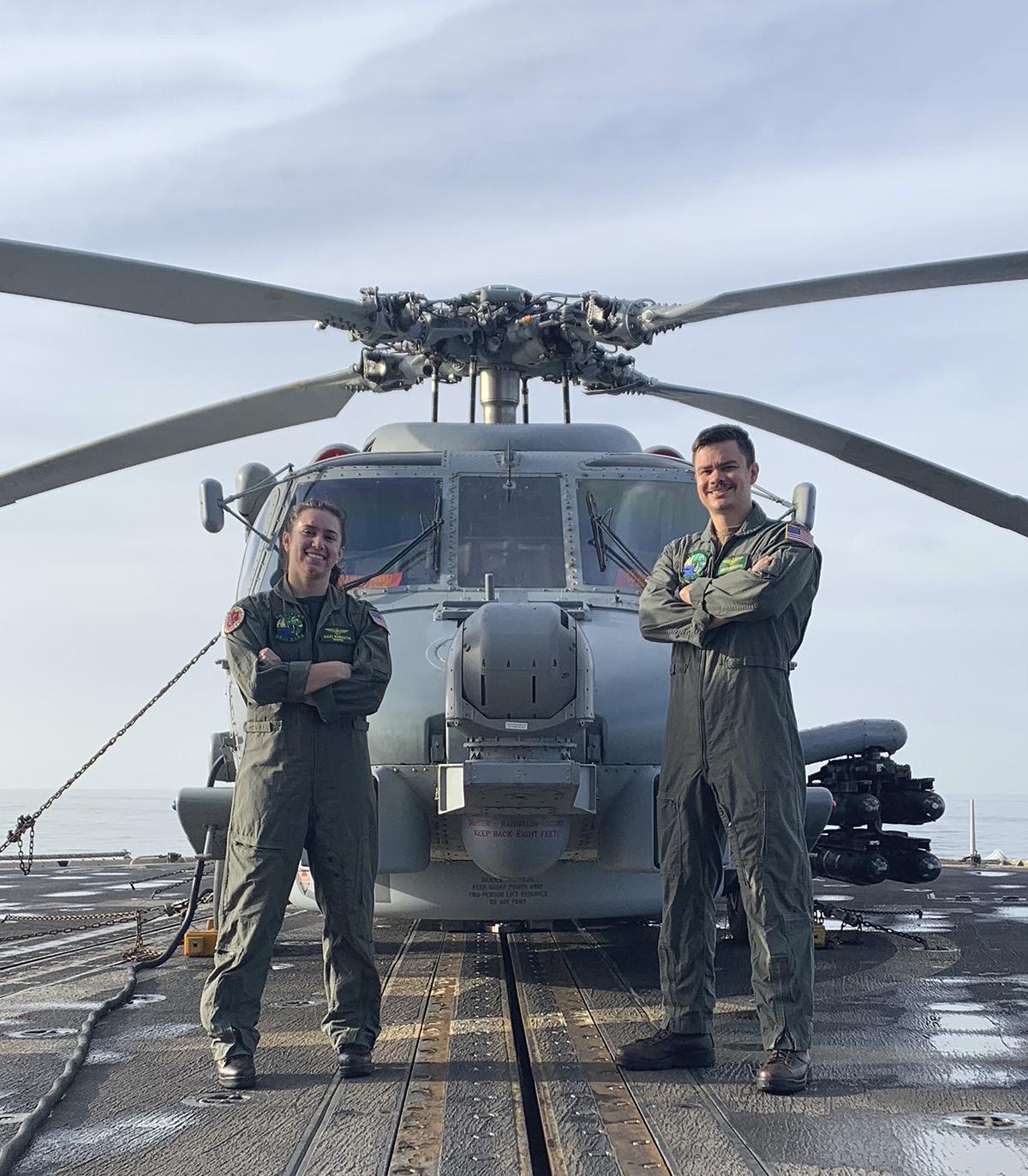Features Wild Fire Rescue “Middle Fire” By LCDR Derek Schramel, USCG
I
t had started as a normal quiet duty night at Coast Guard Sector/Air Station Humboldt Bay, located in McKinleyville, CA. We had just landed from our night duty trainer when we were piped to the Command Center. We were notified that the Forest Service (USFS) had requested assistance with extraction of two wildland firefighters from a steep forested area within an active wildfire zone in the Trinity Alps wilderness area in northern California. Two firefighters had sustained serious injuries after being struck by a falling boulder and were being stabilized by the members of their fire crew. The first injured firefighter had head, neck and shoulder injuries while the second firefighter had a displaced femur fracture with leg deformation and was drifting in and out of consciousness with signs of shock. The Incident Commander (IC) had determined a hike out of the steep terrain was not possible without further injury or death of the injured firefighters, bedding down for the night was extremely high risk for the fire team due to the changing fire conditions and possible burn-over, and medical consensus agreed there was high likelihood the sustained injuries would cause death before sunrise. The only other nearby agency with a hoist capable helicopter had declined the high risk night time mission. Having just returned from a two hour training sortie, we assembled in the Command Center to begin planning the mission. The steep terrain made it difficult to know the elevation of the injured firefighters but we predicted the rescue would take place at approximately 4,500 feet of elevation. We queried the IC if there was a potential LZ since we knew power margins for an OGE hover would be an issue for our MH65D helicopter at that altitude, but the steep mountainous terrain was heavily wooded with 200’ trees that prevented any possibility of a landing. The IC stated the firefighters had used chain saws to clear enough trees in order to attempt a high altitude hoist. At this point we discussed ORM and assessed the mission as high risk/high gain. This would be our CP and FM’s first SAR case in the USCG. Prior to launching, the RS and FM ensured additional trail lines, weight bags, and the RS’s inland SAR gear were loaded; decisions that proved to be vital during the mission.
LCDR Derek Schramel,, USCG, Aircraft Commander/ PIC, LTJG Adam Ownbey – Co-Pilot (CP), AST2 Graham McGinnis – Rescue Swimmer (RS, AMT3 Tyler Cook – Flight Mechanic (FM), Coast Guard Rescue Helicopter 656.
to analyze the hoisting area and environmental factors to get an idea of the power requirements for hovering. During this process I reverted to the training I received earlier in my career at the Colorado Army National Guard High-Altitude Aviation Training Site (HAATS), but trying to predict the best approach path and wind zone model was significantly complicated due to the ineffectiveness of the NVGs, steep ridges, and severe up/down drafts fueled by the fire. We made what seemed like 10 attempts to approach the clearing resulting in wave-offs due to insufficient power. After multiple attempts to hover, we were eventually able to have a sufficient power margin to establish a tree top hover over a 20x30 ft hoisting area cut into
Launching at 2300L we navigating through mountainous terrain on NVGs with zero percent illumination, we then found ourselves entering a canyon obscured with smoke, no visual horizon, steep terrain, and portions of the canyon rendering the NVGs unusable due to the intensity of the wildfire flames. As we proceeded up the narrow canyon towards the steep ridgeline engulfed in flames I experienced multiple bouts of vertigo due to the onslaught of visual illusions. I relied upon my CP to call out angles of bank off by up to 15 degrees, 500’ altitude deviations due to steep terrain and fire updrafts, with airspeed fluctuations from 40-90 knots. Once we located the fire team dug into their self-made clearing on the edge of the wildfire we began the process of doing high/low recon passes Rotor Review #153 Summer '21
68









































